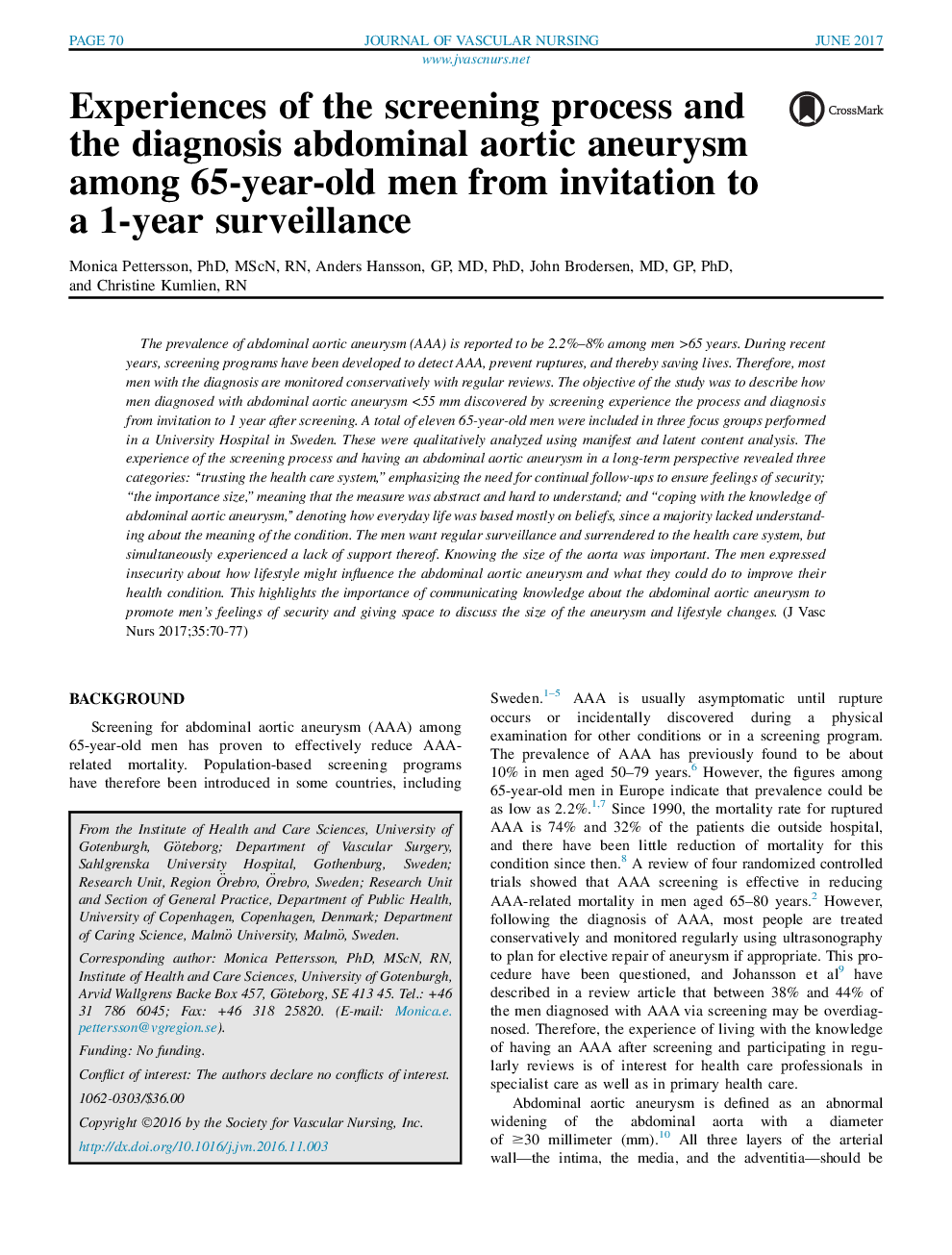| Article ID | Journal | Published Year | Pages | File Type |
|---|---|---|---|---|
| 5570803 | Journal of Vascular Nursing | 2017 | 8 Pages |
Abstract
The prevalence of abdominal aortic aneurysm (AAA) is reported to be 2.2%-8% among men >65Â years. During recent years, screening programs have been developed to detect AAA, prevent ruptures, and thereby saving lives. Therefore, most men with the diagnosis are monitored conservatively with regular reviews. The objective of the study was to describe how men diagnosed with abdominal aortic aneurysm <55Â mm discovered by screening experience the process and diagnosis from invitation to 1 year after screening. A total of eleven 65-year-old men were included in three focus groups performed in a University Hospital in Sweden. These were qualitatively analyzed using manifest and latent content analysis. The experience of the screening process and having an abdominal aortic aneurysm in a long-term perspective revealed three categories: “trusting the health care system,” emphasizing the need for continual follow-ups to ensure feelings of security; “the importance size,” meaning that the measure was abstract and hard to understand; and “coping with the knowledge of abdominal aortic aneurysm,” denoting how everyday life was based mostly on beliefs, since a majority lacked understanding about the meaning of the condition. The men want regular surveillance and surrendered to the health care system, but simultaneously experienced a lack of support thereof. Knowing the size of the aorta was important. The men expressed insecurity about how lifestyle might influence the abdominal aortic aneurysm and what they could do to improve their health condition. This highlights the importance of communicating knowledge about the abdominal aortic aneurysm to promote men's feelings of security and giving space to discuss the size of the aneurysm and lifestyle changes.
Related Topics
Health Sciences
Nursing and Health Professions
Nursing
Authors
Monica PhD, MScN, RN, Anders GP, MD, PhD, John MD, GP, PhD, Christine RN,
